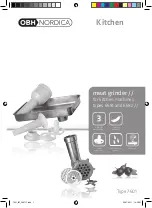
2-14
RedMAX Administration and Maintenance Guide
Redline Communications Inc. Confidential and Proprietary
If you are checking for packet loss, ensure that the rate you specify is low enough so as
not to cause packet loss simply by overloading your service flow.
In general you do not need to perform bi-directional TCP throughput tests as this type of
test does not accurately replicate any typical usage scenarios. You may find that the net
bi-directional throughput of the system is lower than the results of the separate
uni-directional tests, where performed. This is due to the fact that TCP acknowledgements
for the downlink flow will be caught in the same data queue as data packets for the uplink
flow, and vice versa.
Network Sniffers
In order to ensure that your system is performing as expected or for troubleshooting
purposes you may need to see exactly what packets are sent from a certain device; what
packets are received, etc. Software (and hardware) tools that allow you to do this are
called network sniffers and there are a few available on the market.
Ethereal is a popular, open-source application that contains almost all of the features of
the more expensive tools. Some of the better-known, commercial applications are Network
General's Sniffer and Wild Packet's Etherpeek. The usage of each of these applications
currently is beyond the scope of this document.
Using the rfMonitor Application
The rfMonitor application is provided by the Redline Technical Services department and
can be used for monitoring your wireless performance over time. It monitors the RSSI and
CINR values at set intervals (500ms ~ 10s) and graphs the results. The results can be
saved as either an image, or as a .csv file for use in any spreadsheet program.
The latest version can be found on the Redline Partner website, under Support Tools. A
User Guide is also provided on the partner site.
Planning/Scheduling Equipment Maintenance
Most RedMAX equipment maintenance, such as upgrading software, replacing cables or
replacing antennas, will require you to shut down the sector controller or subscriber unit
impacting service. Before performing any maintenance you should first perform the visual
inspection outlined in “Performing a Visual Inspection of the IDU” on page 3-1 and
determine the scope of the required work.
Where: <rate> represents the rate at which you wish to send UDP traffic. If you are
testing system capacity then specify a rate higher than you expect to transfer,
and monitor the achieved rate.
















































